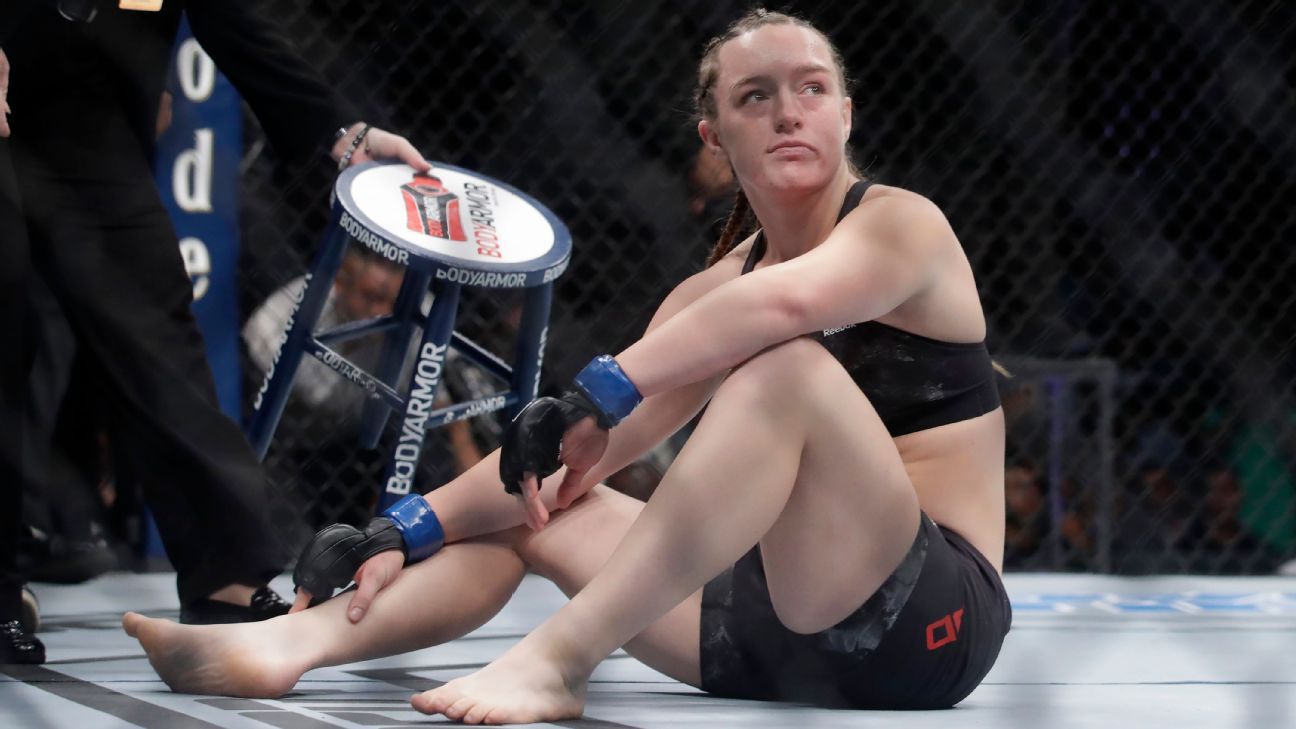
LOS ANGELES -- The California State Athletic Commission has taken a major measure in attempting to combat extreme weight cutting.
CSAC, one of the largest combat sports regulatory bodies in the world, voted Tuesday to pass a rule that would cancel fights if a competitor weighed more than 15 percent above the contracted fight weight on the day of the event. The new rule passed by a vote of 5-0 during a meeting at the Millennium Biltmore Hotel.
Added language to the regulation passed Tuesday stated that promoters, managers, trainers and matchmakers are responsible for ensuring the combatants comply with the new rule.
The idea behind the rule is that it will deter fighters from cutting a large amount of water via severe dehydration in order to make weight, only to gain it back for competition a day later. It is not uncommon for MMA fighters to gain anywhere from 8 to 18 percent of their weight back from the weigh-ins to the fight. Extreme weight cutting is not as prominent in boxing.
In addition, the hope with this new rule is that it will stop large weight disparities between athletes inside the fighting surface.
"To me, that's a health and safety issue," CSAC executive officer Andy Foster said. "It's sanctioned cheating."
For example, under the new CSAC regulation, if a welterweight fighter (171-pound non-title limit) made weight and then weighed more than 195.4 pounds on fight day, the bout would be scrapped. If a bantamweight fighter (136-pound non-title limit) weighed more than 155.2 pounds on fight day, the contest would be canceled.
According to CSAC's data, 28 MMA fights from January 2019 to October 2019, out of a total of 285, had fighters weigh more than 15 percent above the contracted weight class. In boxing, it was only nine fights out of 570 this year with fighters above that mark. In total, there were 40 fights this year (MMA, boxing and kickboxing) out of 873 with competitors who came in more than 15 percent above the weight class.
If UFC 241 in Anaheim, California, back in August had been under this new rule, three fights would have been called off. Sodiq Yusuff, Manny Bermudez and Sabina Mazo all gained back more than 15 percent of their weight on fight day. Paulo Costa and Kyung Ho Kang were right on the borderline, so it's possible four or five bouts could have been yanked.
At UFC Sacramento in July, the main event would have been canceled. Aspen Ladd, who fought Germaine de Randamie, gained back 18 percent of her weight. Ladd made 135 pounds the day before the event but ballooned up to 159 pounds on fight day.
Critics of this new rule will say that every fighter's body is different and this could force some athletes to not fully rehydrate and replenish after making weight. Or worse, it could make some fighters go through another weight cut on fight day, just hours before competing, which would be more dangerous than anything regulators are trying to battle.
"People might cut [weight] twice," Foster said. "That's a concern."
But Foster said the goal is to get promoters and matchmakers to pair fighters together closer to their natural weight. The hope, Foster said, is that the threat of bouts being canceled will be a deterrent to matchmakers booking bouts with fighters who are too big for the contracted weight class.
"The only way we can get there is out of fear of a cancellation," Foster said. "I suspect the matchmakers will probably just move the fights up a little bit if they see weights increase just to prevent risks to their promotions."
Foster said he'd like to see promoters more open to catchweights rather than being strict to weight classes. He said no fans will be turned off from watching a fight because it's contested at a catchweight or a weight class up from where it was booked originally.
"This is a fixable issue," Foster said. "Pretending like we're bound to these weight classes like they're set in stone and fighters can't move up, frankly it's not healthy."
CSAC has been active in attempting to curb extreme weight cutting since it passed a package of regulations in 2016. One of those new rules was a morning weigh-in the day before fights, rather than a traditional afternoon weigh-in. The idea was to give fighters more time to rehydrate and replenish from their weight cuts. The morning weigh-in has been adopted across the world in MMA.
Another 2016 CSAC regulation stated that the commission could recommend a fighter move up to a new weight class if he or she came in more than 10 percent over the contracted weight on fight day. An issue with that rule is many fighters, promoters and other commissions have not completely honored those recommendations.















 Phone: (800) 737. 6040
Phone: (800) 737. 6040 Fax: (800) 825 5558
Fax: (800) 825 5558 Website:
Website:  Email:
Email: 






